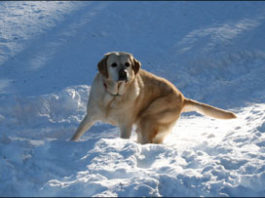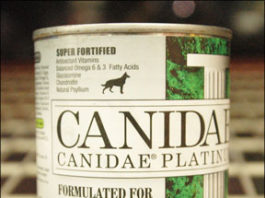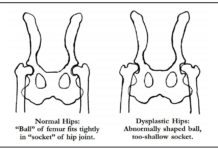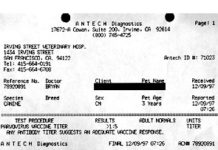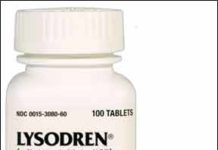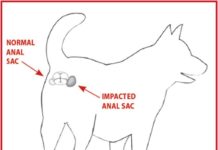Helping Dogs With Hip Dysplasia
First, I need to make it clear that there are many types of rear end lamenesses that may end up being diagnosed as hip dysplasia, but you really can't accept the diagnosis of hip dysplasia without hip x-rays. Hip dysplasia is a radiographic diagnosis, not a clinical diagnosis. That may be splitting hairs, but I see many dogs with conditions such as ruptured and improperly healed cruciate ligaments or lower back arthritis that have been diagnosed with hip dysplasia. Only radiographs can determine whether or not a dog has hip dysplasia.
Protecting Your Dog from Parvovirus
When parvo strikes, it moves fast. Infected dogs may appear to be in perfect health one day and violently ill the next. Emergency veterinary care is expensive, and unless dogs are diagnosed and treated early, many die from this serious disease. However, reactions to parvovirus vary widely both among dogs and their human caretakers. In a world in which parvovirus is ubiquitous it is literally everywhere except environments that have been sterilized parvo kills some dogs and leaves others unscathed.
Diagnosing Atypical Cushing’s Disease in Dogs
What if your dog has all the symptoms of Cushing's excessive drinking, urination, and appetite; pot belly; skin problems; elevated alkaline phosphatase; etc. but the tests say no? Veterinary endocrinologists at the University of Tennessee in Knoxville (UTK) have been investigating this phenomenon. They found that many dogs have elevated steroid intermediates (also called steroid precursors or sex steroids") with normal cortisol. They call this condition "atypical Cushing's disease
Canine Influenza: Is Dog Flu Something to Worry About?
depends on your dog's lifestyle."
Liver Health in Dogs
Promoting the health of your dog's liver may be the key to preserving his long-term health. The liver, located centrally in the dog's body as the link between the breathing and circulatory activities of the chest and the digestive functions of the abdomen, works hard at its many tasks. The liver manufactures blood proteins and fat, and stores energy, fat-soluble vitamins, and iron.
Dog Has Bad Breath?
facial and otherwise. The beard
Parvovirus in Dogs: What It Is and How to Prevent It
Because Canine Parvovirus can be found anywhere infected dogs have visited, the cornerstone to protecting your dog from the parvovirus is vaccination. Since the development of the parvo vaccine, the incidence of infection has been greatly reduced. A single modified live vaccine can confer protection within three to five days. Although parvoviruses continue to evolve, vaccination appears to confer reliable protection against all known strains.
Can Meat Cause Kidney Failure?
CA 94501; or fax to (510) 749-4905
Panosteitis: Canine Growing Pains
Symptoms of panosteitis can look like other conditions, so a thorough evaluation is needed. Other diseases that can mimic panosteitis include tick-borne illnesses (Lyme disease, Rocky Mountain spotted fever), polyarthropathy (inflamed joints), sprains, and fractures.
The Scooting Dog Decoded
Why is Rover dragging his butt across the carpet? Not just annoying to watch, this behavior is usually indicative of a bigger problem - infected or impacted anal sacs. Also called anal glands, these little pouches are found on several different mammals including dogs and cats, and are not very noticeable when healthy. When they are clogged or infected, however, your dog will MAKE you notice them.
Heartworm Treatment Options
The heartworm (Dirofilaria immitis) is a nematode or roundworm named for its place of residence, inside the heart. To understand the challenge of controlling this parasite, you have to understand its life cycle, a complex and slightly bizarre process. Living in a dogs pulmonary arteries, adult heartworms mate. Each female (which can reach sizes of up to 11 inches) produces thousands of eggs, each less than 1/800th of an inch, which are called microfilariae, and circulate in the blood.
Colitis: An Urgent Problem
Conventional medical practitioners use the word colitis to indicate inflammation of the colon (the large intestine), as opposed to inflammation of the small intestine or the stomach. One of the large intestine’s most important roles is to absorb water. If the colon is not functioning properly, a lot of water is left in the stool; that’s diarrhea. There are many different types of diarrhea, and, unpleasant as it may be to contemplate, the characteristics of the diarrhea help us identify which part of the dog’s digestive system is not working properly.



